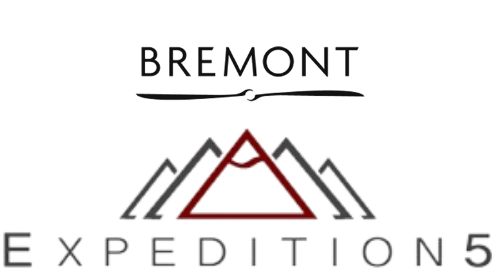
We travelled from East Kalimantan’s provincial capital Samarinda, through an unexplored corridor within The Heart of Borneo in Central Kalimantan, and into West Kalimantan finishing in the sprawling port city of Pontianak.
During this crossing, we were faced with multiple communities that had never seen a white face before, using our basic grip of the language we managed to integrate into several populations and were shown unbelievable generosity and friendship by the locals. We were witness first hand to the huge ecological and social challenges faced by the people of Kalimantan encountering numerous illegal logging camps along our journey.
Using some of the survival skills imparted on us during our years spent as Royal Marine Commandos, we made our way through dense unexplored jungle, navigating using extremely old mapping. On many occasions, we were forced to use ropes to conduct crossings across fast flowing and crocodile infested rivers. Our most significant challenge came whilst we were making our way through The Heart of Borneo a huge jungle sheathed mountain range that acts as a “Border Wall” between Central and West Kalimantan.

The last leg of our odyssey we purchased a small decrepit boat, and rowed our way along the largest island river in the world taking 2 hour shifts at rowing we only stopped to re-supply on food every few days.
Finishing our journey after 39 days we became the first Brits in history to complete such a crossing of Borneo, and the second recorded people to complete a human powered traverse of the planets third largest island, second only to legendary explorer Mike Horn.
Our first crossing was hugely challenging physically and mentally. It imparted many valuable lessons on us which we will utilise in our future traverses. Ultimately it proved an immensely eye opening and truly humbling experience.

At 4,884 meters Puncak Jaya is New Guineas tallest peak, and it is also the highest island mountain peak in the world.
Whilst it’s landmass only takes up 0.5% of the world’s surface, it contains between 5-10% of all species found on earth, making New Guinea one of the most bio-diverse places in the world.

During April and May 2017, we completed our North to South traverse of this remarkable island along a route the majority of which no outsiders had ever travelled. During our journey, we walked along one of the most dangerous highways on earth, climbed perilous mountains clad with thick barely penetrable jungle, and paddled along a river crawling with pirates, crocodiles, and venomous snakes. Uncovering artefacts such as anti-aircraft guns and downed planes from the second world war, our expedition was truly one of discovery. With the ever-present threat of armed “Raskols” and inter-tribal conflicts following us, skills of negotiation were vital in arranging and maintaining “safe passage” throughout our journey.
This was exploration and adventure at its rawest.
In traversing the second island in our list we have come closer to completing our dream of becoming the first humans to cross the five largest islands on the planet

For this reason, wethought it appropriate to make their traverse east to west, lighthouse to lighthouse.

We were lucky enough to stay in one of the main hospitals in one of the more remote regions of Madagascar; it was an incredibly sobering experience and we were witness to the true principles of humanity within such a harsh land.
As the rainy season had yet to arrive and failed to appear the previous year the rivers had dried up within the islands centre resulting in a total failure of the region’s rice crop. Due to the lack of anywhere to resupply water we were forced tried to cover over a marathon each day pulling all of our supplies on a trailer through the parched sands of the Malagasy hinterlands.
We finished our journey on the island's west coast, humbled once again at the kindness shown towards us by a population that has so little.

It covers around 2,166,086 square kilometers. The majority of the landmass (81%) is covered by 1,755,637 square kilometers of barren ice cap that is up to 4 km thick in some places.
The remaining land consists of narrow, rocky and mountainous coast where all the settlements are located. It's tallest peak is the 3,694 m Gunnbjørn Fjeld, which is also the highest point north of the Arctic circle.

Other hazards included hidden crevasses and the threat of Polar bears. Although the 565 km journey is a proven route, this expedition was extremely demanding both physically and mentally.

We will begin their traverse of this remote island at Qikiqtarjuaq on the east coast. Dragging all of our equipment behind us in pulks weighing up to 120 kg, we intend to ski through the awe-inspiring 100 km mountainous Akshayuk pass before reaching the settlement of Pangirtung.

Baffin Island is famous for it's large concentration of polar bears, during it's winter they have been encountered as far south as Cape Dorset. Coupled with hurricane force winds, Arctic storms and temperatures that have been recorded as low as -52 C, means that Baffin Island will be a truly extraordinary feat for us to finish our remarkable world record attempt.

At 4,884 meters Puncak Jaya is New Guineas tallest peak, and it is also the highest island mountain peak in the world.
Whilst it’s landmass only takes up 0.5% of the world’s surface, it contains between 5-10% of all species found on earth, making New Guinea one of the most bio-diverse places in the world.
